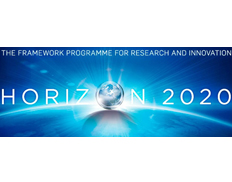Share
Print

Call updates:
Call Flash info can be found under Call Documents tab
The number of proposals submitted for this topic: EeB-07-2015: 40
22 October 2014 16:24 The submission session is now available for: EeB-07-2015(IA)
24 July 2014 09:43
After the update to the Horizon 2020 Work Programme of 22 July 2014,
the following updates were made to the topics of this call:
| Topic identifier: | EeB-07-2015 | ||
| Publication date: | 11 December 2013 | ||
| Types of action: | IA Innovation action | ||
| DeadlineModel: Opening date: |
single-stage 22 October 2014 |
Deadline: | 04 February 2015 17:00:00 |
| Time Zone : (Brussels time) | |||
Specific challenge:The monitoring of real energy use in energy-efficient buildings frequently shows major differences with respect to the predicted performance. This is even worse if a set of interacting buildings is considered. It is therefore important to capture the real complexities of the energy performance of the actual buildings and districts. In addition, effective methodologies for the correct understanding of user behaviour need to be addressed.
Scope: At building level, the research focus is on developing methodologies and tools to monitor and assess actual building energy performance, considering relevant factors such as user behaviour, complex energy systems performance and weather forecast, and to be able to predict accurately building energy loads and consumption along the whole lifecycle. The new methods and tools could include energy performance diagnostics for predictive maintenance (related to different construction typologies and their thermal behaviour), to provide the accuracy required to properly value retrofit technologies and support decision making during the different stages in the life of the buildings. The effective monitoring and management of energy flows to reduce energy consumption and to ensure that the building is operated in a way that meets design intent should also be addressed. Common indicators, measuring technologies and data analysis methods should be developed to monitor building performance during operation.
A holistic “open” approach to building control and monitoring systems is required, integrating any possible existing control and monitoring infrastructure. The commissioning, sign-off and maintenance phase should be addressed. High quality, reliable and non-intrusive (including wireless) data acquisition methodologies are also needed. A positive impact on health and safety (e.g. hygienic aspects of ventilation or DHW systems) as well as comfort is an aspect to consider.
At the level of a block of buildings, the focus will be on real time optimisation of energy demand and supply using intelligent energy management systems with the objective of reducing the difference between peak power demand and minimum night time demand.
Cost-effective and interoperable solutions should be demonstrated for a block of buildings consisting of at least 3 different buildings in real life operating conditions. Autonomous power systems at district level could be considered.
The role of players such as ESCOs, facility managers and third parties to certify performances should be considered in line with future requirements for energy performance contracts and rating of buildings with a life cycle perspective.
For this topic, proposals should include an outline of the initial exploitation and business plans, which will be developed further in the proposed project.
Wherever possible, proposers could actively seek synergies, including possibilities for funding, with relevant national / regional research and innovation programmes and/or cumulative funding with European Structural and Investment Funds in connection with smart specialisation strategies. For this purpose the tools provided by the Smart Specialization Platform, Eye@RIS3 may be useful[1]. The initial exploitation and business plans will address such synergies and/or additional funding. Exploitation plans, outline financial arrangements and any follow-up will be developed further during the project. The results of these activities as well as the envisaged further activities in this respect should be described in the final report of the project.
Activities expected to focus on Technology Readiness Level 5-7. A significant participation of SMEs with R&D capacities is encouraged.
The Commission considers that proposals requesting a contribution from the EU between EUR 4 and 7 million would allow this specific challenge to be addressed appropriately. Nonetheless, this does not preclude submission and selection of proposals requesting other amounts.
Expected impact:
Significant reduction in the difference between real and predicted energy behaviour in a building or a block of buildings, after the demonstration of the viability of the new tools and methods for measuring and analysing real building energy performance.
The gap is narrowed down to a value consistent with energy performance contracts.
Provide solutions with a high replication potential.
Type of action: Innovation Actions.
[1] http://s3platform.jrc.ec.europa.eu; the relevant Managing Authorities can be found at http://ec.europa.eu/regional_policy/indexes/in_your_country_en.cfm
